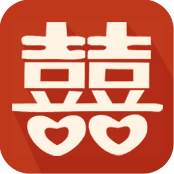如何自学 占星术 占星教程网盘 塔罗牌教程百度网盘
书籍上传封面:
| 简介:
Augustus Le Plongeon,早期玛雅考古学家。 | 语言:
英文 | 格式:
pdf | 作者:
Augustus Le Plongeon | 目录:
– | ILLUSTRATIONS.[1]
| PAGE. | Symbolical stone found in the Mausoleum of high pontiff Cay at Chichen. | 19 | View of the pyramid called "House of the Dwarf," at Uxmal, | 34 | Ground plan of the Sanctuary, | 35 | Ground plan of the Temple of Mysteries, | 36 | Part of cornice surrounding the Sanctuary, | 39 | Cross bones and skeletons carved on the cornice of the Sanctuary, | 39 | Part of a statue with apron on which is sculptured the image of an extended hand. (From Uxmal.) | 40 | Symbolical slab with title of the high pontiff, | 45 | Symbols from the turret dedicated to the high pontiff Cay in the palace of King Can, at Uxmal, | 65 | Tableau of the creation, from the east façade of the palace at Chichen-Itza, | 72 | Prince Coh in battle (from mural paintings at Chichen-Itza), | 78 | Prince Coh’s body laid out for cremation (from mural paintings at Chichen-Itza), | 80 | Slab from Prince Coh’s Mausoleum, at Chichen, leopard eating the heart of his enemies, | 85 | Dying leopard with human head, from Prince Coh’s Mausoleum at Chichen-Itza, | 86 | Priest of Osiris making an offering (from the tombs of Thebes), | 86 | {xv}Statue of Prince Coh, found in his Mausoleum at Chichen-Itza, now in the National Museum in the City of Mexico, | 87 | Slab from Prince Coh’s Mausoleum at Chichen, representing Queen Moo, under the figure of a macaw, eating the heart of her enemies, | 88 | Tableau of the Mastodon worship, at Chichen, | 93 | Small terra cotta heads from British Honduras, | 104 | Sculptures on monolith gate at Tiahuanuco (Peru), from a model in the museum of the Long Island Historical Society in Brooklyn, | 104 | Bas-reliefs from small room at the foot of Prince Coh’s monument at Chichen-Itza, | 115, 118 | Symbols of lower Egypt (from Sir Gardner Wilkinson’s works on Egypt), | 115 | Plate XVII, part II. of Troano M.S., | 116 | Plate XXV. part II. of Troano M.S., head dress of mother Earth, | 118 | Maps of the Maya Empire, | 120 | Yaxche, sacred tree of the Mayas, | 124 | Plate VI., part II. of Troano M.S., | 126 | Worship of sacred tree (Papaya) from a Mexican M.S., in the library of the British Museum, | 134 | Plate XXIV., part I., Troano M.S., | 137 | Sons of King Can, represented under the symbol of deer-heads, totem of the country, plate XVI, part II. of Troano M.S., | 139 | Andyanrt,如果您要查看本帖隐藏内容请 回复
回复
有需要联系v;有需要联系网页弹窗
摘要:本文将详细阐述《11500年前玛雅人和奎奇人的神圣奥秘》 – 神话的相关内容。通过四个方面的阐述,探讨玛雅人和奎奇人的神圣奥秘,带领读者一起进入神秘的古代文化世界。
1、玛雅文化的起源
玛雅文化是世界上最古老、最复杂的古代文化之一。起源于公元前2000年的古玛雅人,他们在中美洲繁衍生息,创造了独特而神秘的文明。这个小标题将围绕玛雅文化的起源展开,包括地理环境、人口分布、社会结构等方面的介绍。
其中,玛雅文化的起源与中美洲的地理环境密切相关。玛雅人居住在森林茂密的高地地区,这种特殊的地理环境为他们的文化发展提供了独特的条件。此外,玛雅人口分布广泛,他们在不同地区形成了不同的玛雅城邦,这些城邦之间存在着紧密的联系。
社会结构是玛雅文化的重要组成部分。玛雅人的社会结构呈现出明显的等级制度,分为贵族、平民和奴隶等不同阶层。不同阶层的人民在社会中扮演着不同的角色,共同构建了玛雅文化的独特魅力。
2、玛雅人的神话信仰
玛雅人深信神灵的存在,并通过神话来解释世界的起源和运行规律。这个小标题将详细介绍玛雅人的神话信仰,包括神灵的类型、神话故事的内容等方面。
玛雅人崇拜的神灵众多且多样化,其中包括太阳神、雨神、月神、农业神等。每个神灵都具有自己独特的特征和能力,玛雅人通过祭祀和祷告来祈求神灵的保佑和指引。
同时,玛雅人的神话故事也是非常丰富的。神话故事中包含了关于世界起源、人类的诞生、自然现象的解释等内容。这些神话故事不仅富有想象力和艺术性,还能够反映出玛雅人对于世界的理解和价值观念。
3、奎奇人的文化传承
奎奇人是玛雅文化的一个分支,他们在玛雅文化的基础上发展出了自己独特的文化传承。这个小标题将重点介绍奎奇人的文化传承和特点。
奎奇人在玛雅文化的基础上,加入了一些自己的创新和发展。他们在建筑、雕刻、绘画等方面有着独特的艺术风格,尤其以雕刻技艺闻名于世。奎奇人的建筑物和雕塑作品体现了他们对自然界和神灵的崇拜,同时也展现了他们高超的工艺水平和审美追求。
奎奇人的文化传承还体现在宗教仪式和社会组织方面。他们继承了玛雅人的宗教仪式,并加以发展和改造。同时,奎奇人的社会组织也有自己的特点,包括领袖制度、社区自治等方面。
4、神秘的奥秘破解
通过对《11500年前玛雅人和奎奇人的神圣奥秘》 – 神话的研究,人们逐渐揭开了其中的神秘面纱。这个小标题将介绍神秘的奥秘被破解的过程和结果。
通过对玛雅人和奎奇人的文化遗产的研究,人们逐渐解读了他们的神话故事和宗教仪式,揭示了神圣奥秘的内涵。同时,考古学的进展也为了解玛雅文化提供了重要的线索和证据。通过考古发现,人们能够更加具体地了解玛雅人和奎奇人的生活方式、社会结构等方面的信息。
总结:通过对《11500年前玛雅人和奎奇人的神圣奥秘》 – 神话的详细阐述,我们深入探讨了玛雅文化的起源、玛雅人的神话信仰、奎奇人的文化传承以及神秘的奥秘破解。这些内容为我们了解古代文化提供了宝贵的资料和视角,同时也让我们更加瞩目于玛雅文化的魅力和神秘。
本文由nayona.cn整理
点击联系需要东西方神秘学学习资料,专业的咨询
只要网页介绍资料,全部都有,还有很多还没来得及更新
每天更新200-300款资料
全网最大最全的神秘学资料平台
请需要什么资料,直接在对话框直接联系我,24小时在线,方便快捷
请需要什么资料,直接在对话框直接联系我,24小时在线,方便快捷
请需要什么资料,直接在对话框直接联系我,24小时在线,方便快捷

联系我们

关注公众号
打赏
 微信扫一扫
微信扫一扫
 支付宝扫一扫
支付宝扫一扫
《旱魃为虐》 – 神话
上一篇
2024年1月21日 上午3:02
《图解天国与地狱》 – 神话
下一篇
2024年1月21日 上午3:04

对占星塔罗感兴趣关注公众号
相关推荐
如何自学 占星术 占星教程网盘 塔罗牌教程百度网盘 摘要内容 一、课程内容丰富 陈小飞 陈安逸星图研究院 钦天门紫微斗数 初阶班(视频课程)提供的课程内容非常丰富多样,涵盖了紫微斗…
如何自学 占星术 占星教程网盘 塔罗牌教程百度网盘 作者:唐.米盖尔.鲁伊兹,珍妮特.密尔斯原文作者:DonMiguelRuiz,JanetMills译者:萧宝森出版社:柿子文化出…
如何自学 占星术 占星教程网盘 塔罗牌教程百度网盘 威卡魔法全套资料pdf,24册,详细了解和应用,配方等都有讲解。 ├──威卡魔法| ├──10有关入门.pdf 1.40M| ├…

对占星塔罗感兴趣关注公众号
如何自学 占星术 占星教程网盘 塔罗牌教程百度网盘 书籍上传封面: 简介: (注:本书是繁体竖排,因为文件较大,所以传到了网盘上)人们不懈寻觅救世主以求救赎但到底该如何分辨找到的是…
如何自学 占星术 占星教程网盘 塔罗牌教程百度网盘 David 觉察到操控(音频课程) AC小课,是一门引人入胜的课程,通过深入研究和实践,帮助学员掌握操控技巧。本文将从多个方面对…
![]() 回复
回复

 微信扫一扫
微信扫一扫
 支付宝扫一扫
支付宝扫一扫




